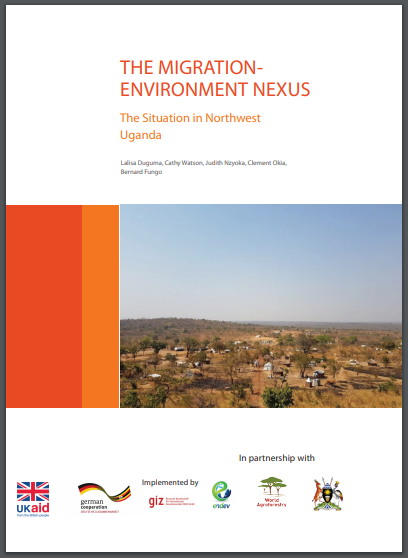The thesis of this report, published by the World Agroforestry, is that refugees inevitably place strain on natural resources and ecosystems. However, severe damage can be averted if environmental thinking becomes part of humanitarian responses.
 This may sound like a tall order. Saving lives is humanitarian workers primary concern. But the environment is in itself lifesaving, the report says.
This may sound like a tall order. Saving lives is humanitarian workers primary concern. But the environment is in itself lifesaving, the report says.
Further, the authors emphasize that allowing the environment to deteriorate also deteriorates the ability to save lives and can even cause new threats: People may begin to fight over the remaining resources.
The core humanitarian sectors of water and health depend upon healthy, functioning ecosystems, they argue. And taking measures, such as catchment-based planning for water, as early as possible can make a vast difference to the well-being of populations caught up in the rapidly changing circumstances of a refugee influx.
Besides refugees urgent need for wood for shelter, warmth and cooking, other drivers like outsiders taking advantage of the turmoil can degrade natural resources too.
Law enforcement structures often become weak or non-existent, the authors note. This opens the door for persons to exploit natural resources in any model they are capable of.
The true value of natural resources is generally underestimated. From 2014 to 2017 less than 2% of the budget of the UN Refugee Agency in Uganda went on the environment although refugees rely almost entirely on trees for energy.
Were it to be monetized taking FAO’s estimate that a refugee in Uganda requires about 3.5 kg of wood a day for cooking the value of woodfuel contributed by the country’s forests, woodlands and scattered trees to the refugee response has a staggering value of a USD 96 million a year.
The report concludes that humanitarian response needs to embrace sustainable land management and restoration, if need be and recommends that every refugee setting includes three key aspects.
- A unit that responds to environmental issues from the start.
- Environmental impact assessments to reduce negative externalities.
- Land allocated to refugees to plant or regenerate their own sources of wood.
None of this is entirely new. Importantly, the joint Environment Unit of the United Nations Environment Programme and United Nations Office for the Coordination of Humanitarian Affairs has developed the Nexus Environmental Assessment Tool (NEAT+), a screening tool to identify environmental concerns before a refugee intervention.
Nexus thinking is crucial, said lead author Lalisa Duguma. We need to go beyond seeing issues in refugee-hosting areas as simply migration matters and see them instead as a challenge that we must address to ensure sustainability of the sociological systems that support life. This requires multi-faceted thinking that takes into account interdependent factors.